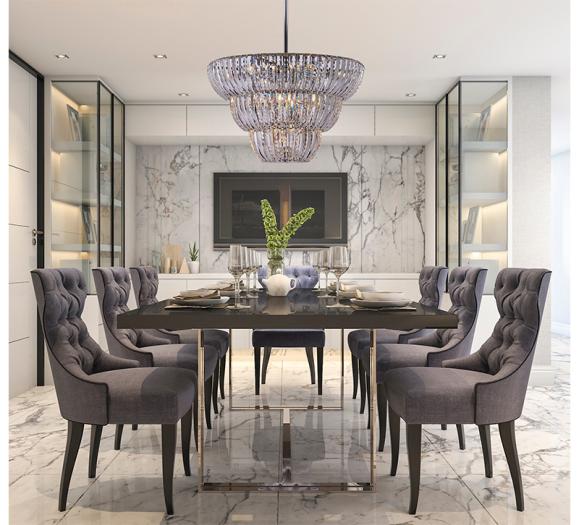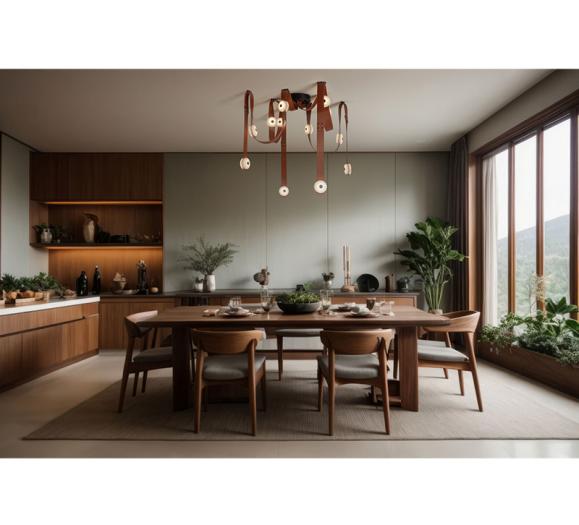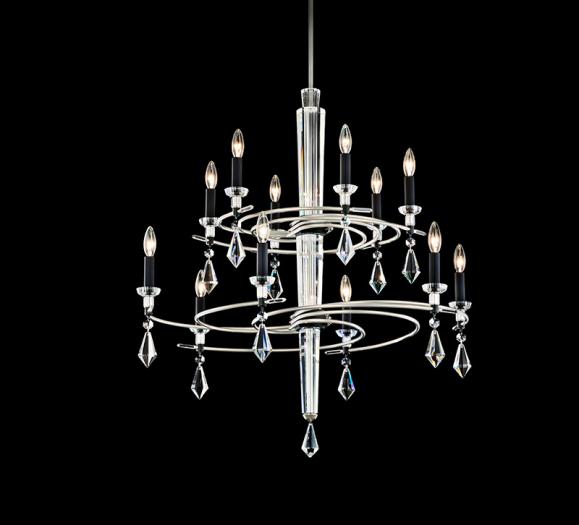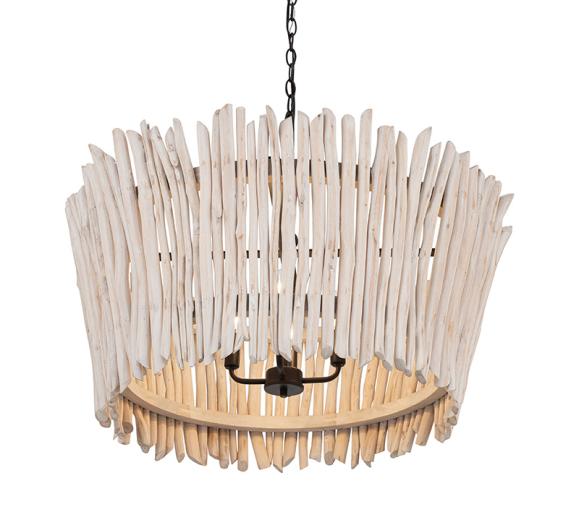Following the pandemic, homeowners are looking to refresh their spaces. Changing outdated light fixtures can update a home in subtle, yet meaningful ways. As Randall Whitehead, IALD puts it, “why hold onto those fixtures from the 1980s or ’90s? We change our phones every year. Why live with light fixtures that are 30 and 40 years old?” Below are some of the top trends consumers can expect to see.
Cross Illumination
Rather than the “birds on a wire” over mirrors look, consumers are beginning to see the value of cross illumination — placing a light fixture on each side of the mirror instead of above. This setup provides even illumination to both sides of the face, without heavy shadowing under the eyes and chin.
During installation, homeowners need to fix this type of lighting at an equal distance off the center of the sink, according to Whitehead. Traditionally a pair of vanity lights are mounted vertically, 18 inches from the centerline of the sink and 36 inches apart. A good mounting height for the junction box is 5‘6’’ above the finished floor.
“Projects where the mirror is as wide as the vanity can also use a pair of pendant hung fixtures, installed in the ceiling,” Whitehead says. “Homeowners should have a space of around three inches between the shade material and the mirror surface.”
Cross lighting is also necessary to fill in any shadows made by potential down lighting. Sconces are a great choice for this, adding a decorative flair to the design. In this scenario, homeowners should use tighter light beams with a higher output of task lighting.
“Most bathrooms now have a lot of layered lighting: there is recessed lighting, or there’s a flush mount in addition to the lights around the mirror,” says Megan Rollinson, Product Manager at Hinkley. “There’s a lot of light at play. Cross illumination gives people the ability to use statement-making sconces in the bathroom.”

Demand for LED
LED lighting has developed immensely over the years. Manufacturers now offer a high CRI (color rendering index) on their LEDs, providing the richness of incandescent light. There are also a wide variety of color temperatures available. Whitehead recommends a CRI of 90 or higher and a temperature of 2700 degrees kelvin — the color of incandescent light at full brightness.
“We tend to like our lights dimmed,” he says. “Incandescent light gets warmer when dimmed. LEDs do not inherently do that. The color temperature remains constant. It is only in the intensity of the light which changes.”
Warm-dim LEDs, like Philips LED bulbs, dim with a “warm glow” effect, similar to traditional incandescent bulbs. Other LED bulbs simply become less bright, without the cozy glow.
“What’s really happening is that there are a variety of color temperature LEDs within the fixture that dim in succession to provide that warm, inviting light,” Whitehead says. “This desire for LEDs carries right into the bathroom.”
According to Rollinson, integrated LED fixtures have also transformed aesthetically. She says Hinkley’s early offerings tended to skew more modern and contemporary.
“Now, most of our integrated LEDs are very transitional or very updated traditional, which lends itself to a wide variety of decor,” she says. “You can take that technology and fit it to any aesthetic. Our integrated fixtures have been one of our fastest growing segments.”
Toe-Kick Lights
Toe-kick lights are also trending in bathroom lighting, where an LED strip is mounted at the base or underneath a floating vanity to provide a glow of light. Though most homeowners don’t consider adding toe-kick lighting within a bathroom setting, it can add an element of luxury to the space. In addition, it can serve as a path light for rooms where extra safety measures are needed.
“Toe-kick lighting turns on automatically when someone enters the room at night,” Whitehead says. “This gives enough illumination to use the bathroom without turning on other lights, which could throw off your circadian rhythm.”
When combined with traditional overhead lighting, toe-kick lighting also helps balance the “hot spots” in a room. Instead of opting for LED strips or recessed toe-kick lighting, homeowners can also use basic 120V plug-in LED rope lighting, where the cost is considerably less.
An electrician can also connect a wall switch to the outlet where the LED rope lighting is plugged in. This will make turning the lighting on more convenient and allow homeowners to hide cords and outlets.
Illuminated Mirrors
Illuminated mirrors go back to the days of vintage movies where the mirror is surrounded by a ring of bulbs — the original “ring lights.” Lighting manufacturers are now providing these mirrors with dimmable LEDs, including warm-dim varieties which change the light from 5000 degrees K (daylight) to 2400 degrees K (the color of dimmed incandescent).
“You can get them with built-in side lighting or lighting that goes along the entire perimeter of the mirror,” Whitehead says. “With this kind of light placement our faces are more evenly illuminated. This makes it easier to apply make-up or shave…or both.”
For a modern look, lighted mirrors combine lighting and mirror all in one. They are available in various styles as well, making them suitable for every bathroom. Lighted mirrors not only enhance the visual value of your bathroom but make it more practical and convenient.
Various features such as Bluetooth speakers, customizable lights and even built-in televisions are also available in illuminated mirrors.







